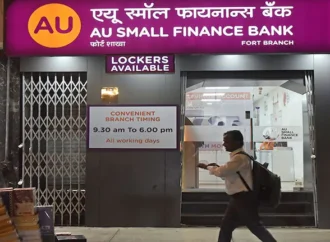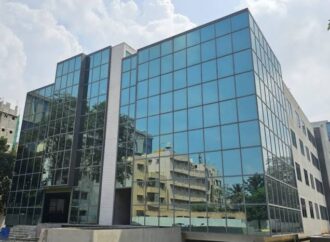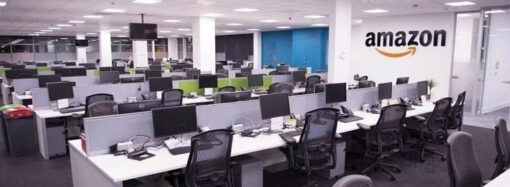Flexible office spaces in India have exceeded 80% occupancy, with cities like Mumbai and NCR leading the way. Cost benefits, ESG compliance, and expansion into Tier 2 cities drive growth. Flex spaces offer affordability, adaptability, and sustainability, making them a strategic choice for startups and large corporations.
According to a recent report by Knight Frank India, occupancy rates for flexible office spaces in India have exceeded 80% across major office markets. Cities like Mumbai (94%), NCR (92%), Bengaluru (86%), and Hyderabad (84%) have emerged as key hubs for flexible workspaces, driven by a surge in demand from corporations seeking adaptable office environments. The report highlights the significant growth of flex space operators, which have leased approximately 52.9 million square feet (msf) between 2017 and the first half of 2024, reflecting a compound annual growth rate (CAGR) of 22%.
Demand for Flex Spaces Continues to Rise
Shishir Baijal, CMD of Knight Frank India, stated, “With GDP growth projections for FY 2025 reaffirming India as the fastest-growing major economy, the demand for innovative office spaces is soaring. Occupiers are now looking beyond basic amenities to focus on employee well-being and flexible office space operators are well-positioned to meet these evolving demands.” This shift towards employee-centric, agile workspaces has contributed to a 6% increase in leasing activity during the first half of 2024, with flexible workspaces accounting for over 21% of total commercial real estate transactions.
In cities like Mumbai and NCR, the high 94% and 92% occupancy rates underscore flex spaces’ popularity in densely populated regions. LC Mittal, Director of Motia Group, remarked, “This trend is evident in high occupancy rates across cities, indicating the benefits of flex spaces in densely populated areas. The rising demand for managed office spaces further demonstrates the growth of this sector in India.”
Flex Space Growth and Investment Trends
The report also highlights the substantial private equity funding secured by the flexible workspace sector since 2017, amounting to $820 million. However, investment trends have shown volatility, with a peak of $595 million in 2022 dropping dramatically to $13 million in 2023. Despite these fluctuations, Keshav Mangla, business development at Forteasia Realty Pvt Ltd, remains optimistic, stating, “This volatility does not seem to dampen the sector’s growth potential. Flex operators are expanding in Tier 1 cities and looking at Tier 2 cities like Coimbatore, Jaipur, and Nagpur. This diversification could redefine work habits in different regions across India.”
The increase in flex space operators’ leasing activities highlights the sector’s resilience and ability to adapt to changing market conditions. The proportion of flex spaces in total office transactions during H1 2024 rose to over 21%, further cementing the industry’s growing importance in the commercial real estate market.
Cost Benefits and ESG Compliance Driving Flex Space Appeal
One of the key factors contributing to the popularity of flexible office spaces is the cost advantage they offer. Aman Gupta, Director of RPS Group, explained, “The Knight Frank India report brings an interesting element of cost regulation in the flex space industry. There is often an assumption that flex spaces are more expensive than standard leases, but this is not necessarily true.” Gupta noted that flex space operators can maintain affordable rents, even in B and C-grade office spaces, compared to conventional leasing. For example, in Mumbai, A-grade flex spaces cost approximately INR 294 per square foot per month, while conventional leases are priced at INR 304 per square foot per month.
Flexible workspaces are attractive for companies because of their cost benefits, flexibility, and compliance with ancillary offerings such as ESG (Environmental, Social, and Governance). According to Gupta, these additional benefits could reduce companies’ stigma towards flexible office spaces and encourage more businesses to embrace them as part of their real estate strategy.
Expanding into Tier 2 Cities and Focus on User Health
In addition to cost savings, flexible office spaces are expanding into Tier 2 cities, offering businesses access to affordable office rentals and skilled workforces outside of major metropolitan areas. Cities like Coimbatore, Mysuru, and Jaipur are becoming increasingly popular as flex operators capitalise on improved connectivity and lower costs. This geographic expansion is diversifying the flexible workspace market and redefining work habits in these regions.
Anurag Goel, Director of Goel Ganga Developments, emphasised the evolving role of technology and user health in flexible workspaces. “A few years ago, flexible workspaces were considered a trend, but today, many of them are pioneers in introducing new approaches to work organisation. They do not only integrate modern technology and address sustainability but also change the focus from technological to user health in flex-oriented workspaces these days.”
The Future of Flexible Workspaces
The Knight Frank India report paints a positive picture for the future of flexible workspaces in India. As more companies prioritise employee well-being, sustainability, and cost efficiency, flexible office spaces are well-positioned to meet these evolving demands. With strong occupancy rates, expanding geographic reach, and increasing financial stability, the flexible workspace sector is set to continue its upward trajectory.
Shishir Baijal noted, “By embracing ESG principles and cutting-edge technology, the sector isn’t just keeping pace—it’s setting the agenda for the future of workspaces.” Flex spaces are no longer just an option for startups and small businesses; they are becoming a key part of corporate real estate strategies, driving growth and innovation across India’s commercial real estate market.
With a growing emphasis on agility, employee-centric design, and sustainable practices, the future of flexible workspaces looks bright as they continue to reshape how and where people work.























